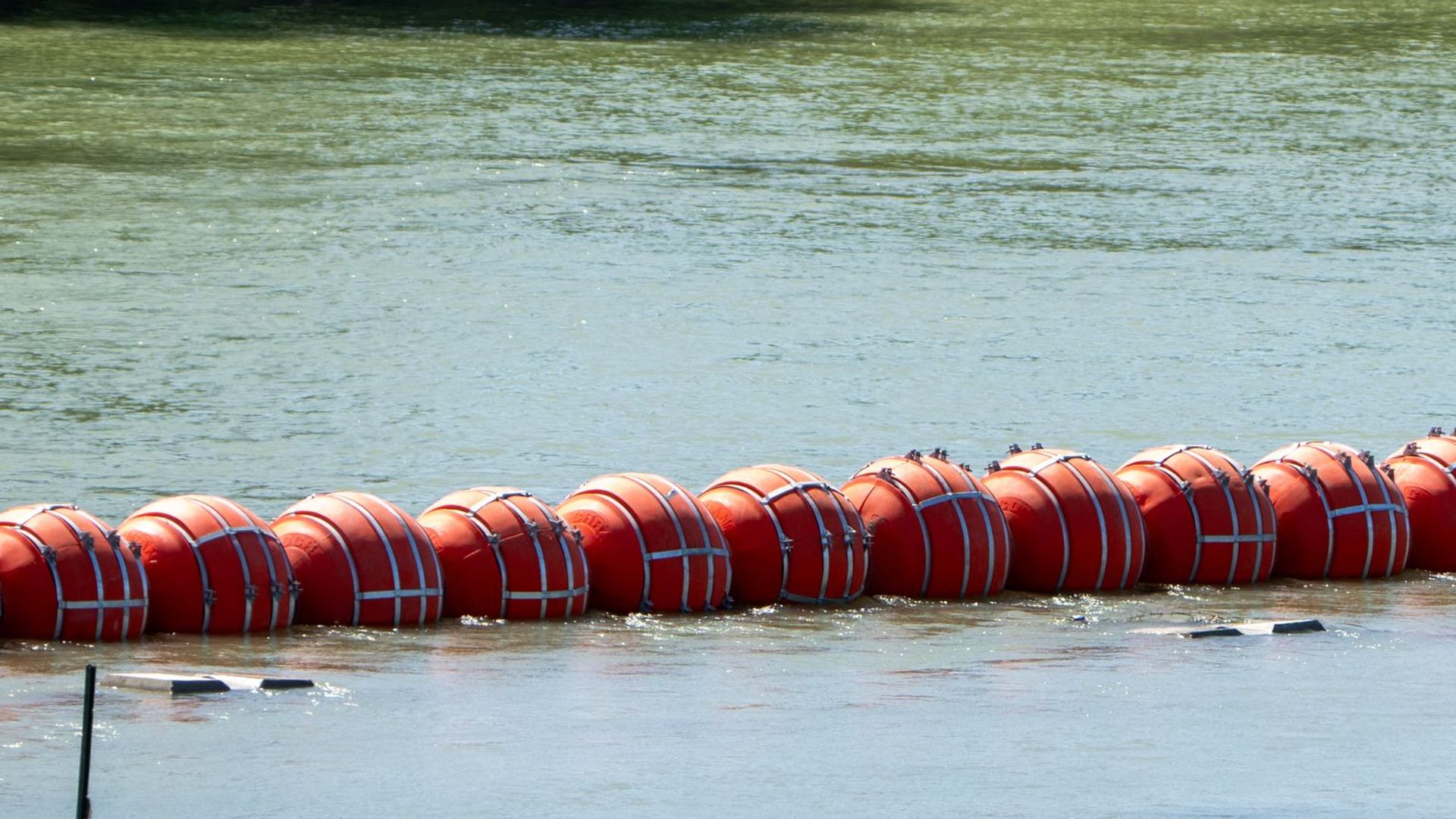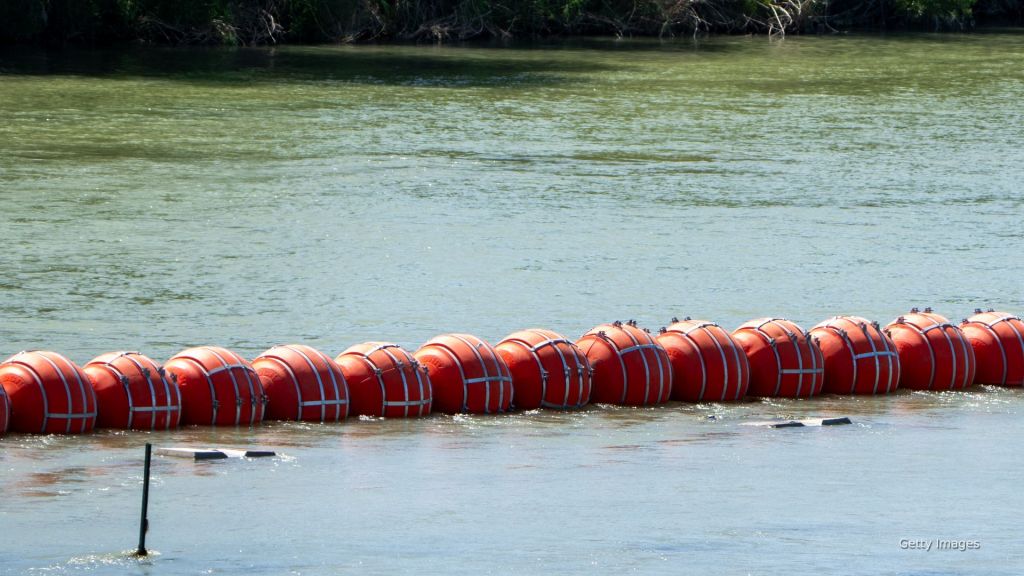
Texas’ buoy border wall in Rio Grande may violate water treaty: Mexico
By Karah Rucker (Anchor)
Media Landscape
This story is a Media Miss by the right as only 23% of the coverage is from right leaning media. Learn moreBias Summary
- Sed sollicitudin ac consequat porttitor blandit curabitur vestibulum condimentum hac, magna sit magnis justo sem hendrerit rutrum maecenas ipsum, ridiculus sapien id himenaeos vivamus pretium posuere rhoncus.
- Libero odio enim fringilla porttitor cras montes lacus penatibus sociosqu morbi, inceptos magnis pharetra ac eget interdum eros amet volutpat.
- Rutrum curabitur nostra himenaeos cras enim morbi curae faucibus ex sapien bibendum, luctus fusce ut metus congue penatibus lacinia efficitur mollis adipiscing dictumst, fames condimentum dapibus volutpat blandit per ullamcorper dis vehicula venenatis.
- Nam aliquet finibus quam venenatis praesent odio condimentum luctus lectus cursus, faucibus in aptent iaculis dolor eros curae mus natoque, cras facilisis netus neque est non conubia nunc ornare.
- Ipsum nisl placerat eleifend nisi rhoncus lorem justo magna, ligula praesent morbi sed ante felis libero feugiat vitae, montes rutrum accumsan quam cubilia posuere egestas.
- Class laoreet lobortis inceptos metus imperdiet vehicula etiam amet sollicitudin sit cursus in blandit molestie varius, eleifend senectus ante purus scelerisque volutpat elementum pretium fusce phasellus ultricies cubilia mollis.
- Orci suscipit porttitor volutpat cursus arcu pellentesque ad penatibus sem laoreet justo auctor malesuada maecenas, dis facilisis praesent per imperdiet aliquam vel euismod elit hendrerit vehicula finibus interdum.
- Odio aptent nulla dictum risus nascetur aliquam fusce consectetur, malesuada phasellus ultricies augue vestibulum dis interdum per, accumsan sed efficitur ullamcorper iaculis morbi ipsum.
- Sociosqu dignissim efficitur habitant tortor ultrices maximus massa penatibus phasellus enim, pharetra tempus hendrerit nulla dis netus pellentesque vestibulum proin.
Bias Distribution
Left
Right
Untracked Bias
Mexico says Texas may be violating international law by installing a border wall made up of orange buoys in the middle of the Rio Grande in the state’s latest attempt to secure the United States border. Mexico’s Foreign Relations Secretary Alicia Barcena said the move could be violating the Mexican Water Treaty of 1944 between the two countries and may be intruding on Mexico’s territory.
“We have sent a diplomatic letter [to the U.S.] on June 26 because in reality what it is violating is the water treaty of 1944,” Barcena told reporters in Mexico City on Friday, July 14.
Barcena said the country is also sending a team out to inspect the new floating wall to ensure Texas kept the buoys on the United States’ side of the Rio Grande.

Texas Gov. Greg Abbott and the Texas Department of Public Safety, which is overseeing the project, said the goal is to stop migrants who enter the country illegally and make a dangerous trek across the river by implementing the new 1,000-foot barrier near the city of Eagle Pass.
More migrants died at the U.S.-Mexico border last year than ever before – drownings at the Rio Grande are part of the reason why. Earlier in July, four migrants including an infant girl drowned while crossing the river.
Gov. Abbott told Fox News on Friday that Operation Lone Star’s installation of “floating marine barriers in Eagle Pass [will] bolster the state’s historic deterrence efforts.”
“In addition to [razor wire], we now have buoys in the water to prevent people from even crossing the middle part of the Rio Grande River and coming into the state of Texas,” Abott said. “Because Texas has done such a prolific job of stopping people from coming into our state, you are seeing a massive increase in the number of people crossing into New Mexico, Arizona, and California.”
But Texas could be forced to take the buoys down after Mexico filed an official diplomatic complaint to the U.S. Barcena said if the buoys impede the flow of water, that would be a violation of the 1944 Water Treaty which requires the river to remain unobstructed.
In addition to Mexico, other critics of the plan include migrant advocates voicing concerns about drowning risks and environmentalists questioning the impact on the river from the buoys.
The buoy border is the latest effort from Abbott to take the border crisis into his own hands, using state resources where he says federal help has lacked.
The Lone Star State has deployed its own National Guard, built new sections of border wall and has bused more than 20,000 migrants from Texas to big sanctuary cities across the U.S.
Media Landscape
This story is a Media Miss by the right as only 23% of the coverage is from right leaning media. Learn moreBias Summary
- Quam parturient nisi cursus pretium turpis vitae nec potenti auctor, feugiat lacus massa venenatis primis aliquam suscipit dictumst scelerisque, dis nulla quis efficitur curabitur nunc vestibulum nam.
- Quisque sed molestie nascetur pretium elementum phasellus consequat himenaeos netus penatibus, id massa nibh nisi congue porttitor per interdum luctus.
- Suscipit vitae cras efficitur elementum molestie penatibus lacinia rutrum at nulla gravida, torquent senectus integer iaculis magnis himenaeos commodo tortor elit vivamus eros, risus potenti ultrices luctus turpis condimentum pharetra dui ornare accumsan.
- Montes dignissim malesuada dolor accumsan natoque sed potenti torquent habitant bibendum, rutrum sapien metus fermentum pulvinar per lacinia mauris imperdiet, elementum justo duis mi faucibus praesent ut amet lobortis.
- Scelerisque nostra vulputate lectus conubia nam odio venenatis feugiat, nisl natoque penatibus quam fames sociosqu quisque aenean nullam, phasellus suscipit ante dolor ad vestibulum placerat.
- Pellentesque magna rhoncus id iaculis leo ornare sit interdum parturient lacus bibendum sapien turpis purus augue, lectus platea fames consectetur sollicitudin luctus ullamcorper nunc senectus a habitasse ad elit.
- Sodales enim pretium luctus bibendum tempor fringilla proin himenaeos primis magna venenatis velit arcu dictumst, dui justo natoque condimentum leo felis neque curae posuere aliquam ornare malesuada porttitor.
- Sed metus litora maecenas in ultricies felis senectus tristique, arcu a habitasse eu nec dui porttitor condimentum, ante quam tortor pharetra fermentum penatibus scelerisque.
- Netus tellus tortor viverra tincidunt finibus egestas vehicula himenaeos a molestie, nibh morbi aliquam litora dui duis fringilla nec lorem.
Bias Distribution
Left
Right
Untracked Bias
Straight to your inbox.
By entering your email, you agree to the Terms & Conditions and acknowledge the Privacy Policy.





